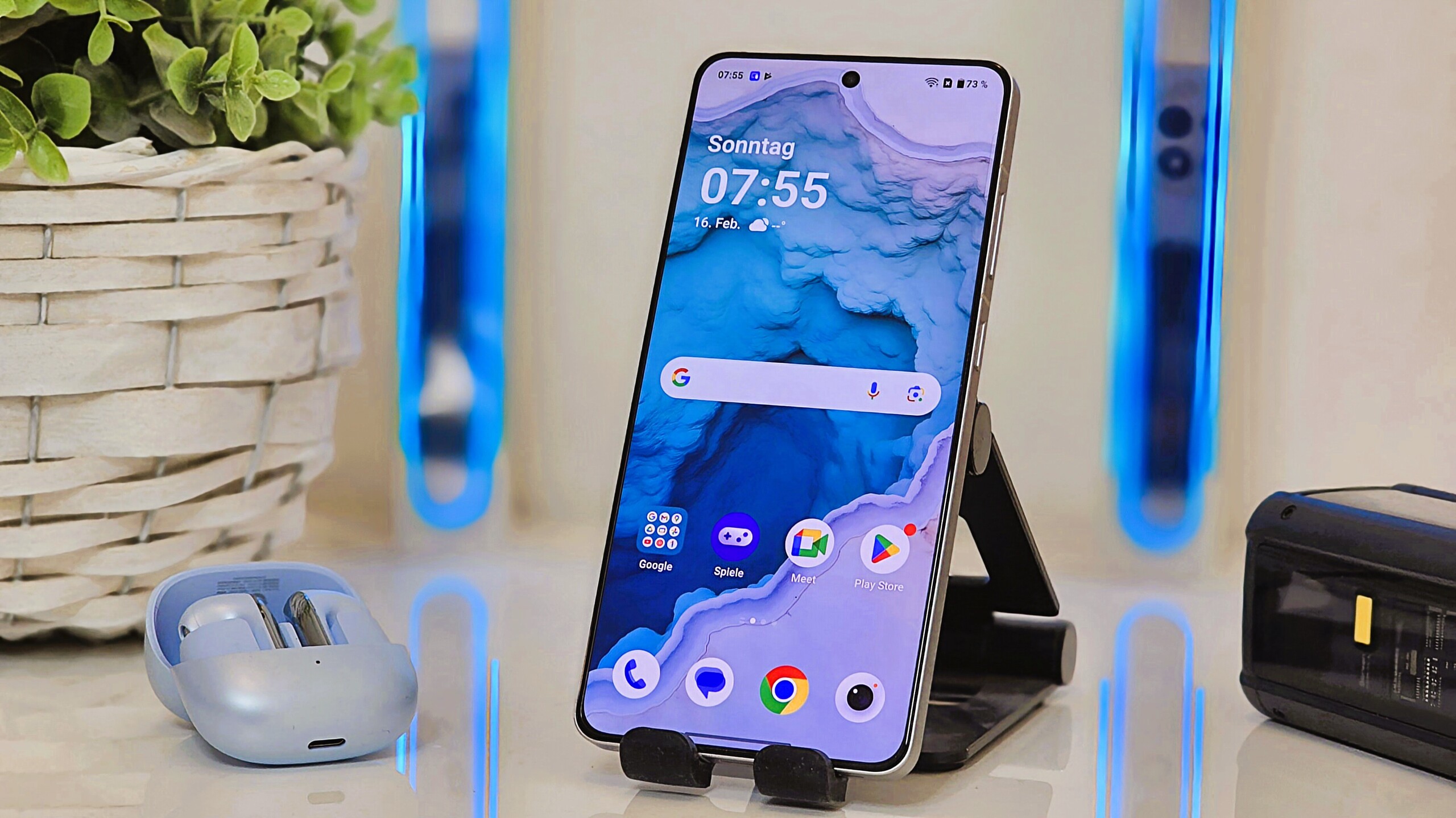
OnePlus 13R review - The smartphone with amazing endurance and a surprising discrepancy
How much throttling is still acceptable?
Reality and wishful thinking sometimes diverge somewhat with the OnePlus 13R. Although the manufacturer advertises its top-of-the-range phone to feature "top performance", we couldn't always confirm this in our test. Nevertheless, the OnePlus 13's little brother offers many positive aspects that speak in favor of a purchase.Marcus Herbrich, 👁 Daniel Schmidt (translated by Daisy Dickson) Published 🇩🇪 🇫🇷 ...
Verdict on the OnePlus 13R
The OnePlus 13R boasts a high-quality appearance and truly impressive endurance. Its combination of last year's flagship SoC, great speakers and a beautiful LTPO panel make the OnePlus smartphone the perfect everyday companion.
However, the Chinese manufacturer's R model lacks some premium features that are increasingly classed as standard in today's high-end smartphones. For example, its USB 2.0 port doesn't deliver the highest performance for this price range and the phone also doesn't support wireless charging or eSIM integration. At a time when many competitors offer a waterproof case, the OnePlus 13R's IP65 rating could additionally be a decisive disadvantage for some potential buyers.
A major weak point of the OnePlus 13R is its high waste heat, which leads to the processor being significantly throttled inside the top-of-the-range phone. A reduction in performance by almost two-thirds at its peak not only resulted in a negative impact on our overall rating, but also leads to performance fluctuations during everyday use during intensive use, such as prolonged gaming or graphically demanding tasks.
Pros
Cons
Price and availability
The OnePlus 13R retails for $599.99 and can be ordered directly from the manufacturer's online store.
Possible alternatives compared
Image | Model / Review | Price | Weight | Drive | Display |
|---|---|---|---|---|---|
| OnePlus 13R Qualcomm Snapdragon 8 Gen 3 ⎘ Qualcomm Adreno 750 ⎘ 12 GB Memory, 256 GB | Amazon: 1. $549.99 OnePlus 13R, 12GB RAM + 256G... 2. $7.99 Supershieldz (3 Pack) Design... 3. $8.98 WILLONE [2+2 Pack] for OnePl... List Price: 749€ | 206 g | 256 GB UFS 4.0 Flash | 6.78" 2780x1264 450 PPI AMOLED | |
| OnePlus 12R 5G Qualcomm Snapdragon 8 Gen 2 ⎘ Qualcomm Adreno 740 ⎘ 16 GB Memory, 256 GB | List Price: 499 EUR | 207 g | 256 GB UFS 3.1 Flash | 6.78" 2780x1264 450 PPI AMOLED | |
| Xiaomi 14T MediaTek Dimensity 8300-Ultra ⎘ ARM Mali-G615 MP6 ⎘ 12 GB Memory, 512 GB | Amazon: 1. $4.99 Mr.Shield Screen Protector c... 2. $5.59 Anoowkoa 3 Pack Compatible w... 3. $11.99 Ibywind Screen Protector For... | 195 g | 512 GB UFS 4.0 Flash | 6.67" 2712x1220 446 PPI AMOLED | |
| Honor 200 Pro Qualcomm Snapdragon 8s Gen 3 ⎘ Qualcomm Adreno 735 ⎘ 12 GB Memory, 512 GB | Amazon: 1. $11.99 Ibywind for Honor 200 Pro 5G... 2. $24.99 TUDIA DualShield Grip Compat... 3. $8.99 Hydrogel Film Screen Protect... List Price: 800€ | 199 g | 512 GB UFS 4.0 Flash | 6.78" 2700x1224 437 PPI OLED | |
| Samsung Galaxy S24 FE Samsung Exynos 2400e ⎘ Samsung Xclipse 940 ⎘ 8 GB Memory, 128 GB | Amazon: 1. $505.00 Samsung Galaxy S24 FE 5G wit... 2. $559.00 SAMSUNG Galaxy S24 FE AI Pho... 3. $519.99 Samsung Galaxy S24 FE 256GB ... | 213 g | 128 GB UFS 3.1 Flash | 6.70" 2340x1080 385 PPI AMOLED | |
| OnePlus 13 Qualcomm Snapdragon 8 Elite ⎘ Qualcomm Adreno 830 ⎘ 16 GB Memory, 512 GB | Amazon: 1. $799.99 OnePlus 13,16GB RAM + 512GB ... 2. $549.99 OnePlus 13R, 12GB RAM + 256G... 3. $11.99 JZG 3 Pack Screen Protector ... List Price: 720€ | 213 g | 512 GB UFS 4.0 Flash | 6.82" 3168x1440 510 PPI AMOLED |
Table of Contents
- Verdict on the OnePlus 13R
- Specifications of the OnePlus 13R
- Case - The OnePlus phone with an IP rating
- Connectivity - The OnePlus phone only comes with USB 2.0
- Software - The OnePlus 13R with Android 15
- Communication and GNSS - The OnePlus smartphone supports dual-GPS
- Telephone functions and call quality - The OnePlus phone without eSIM support
- Cameras - The OnePlus 13R with OIS
- Accessories and warranty - The OnePlus phone comes without a power supply
- Input devices and operation - The OnePlus phone with FaceUnlock
- Display - The OnePlus 13R uses an LTPO panel
- Performance - The OnePlus smartphone comes with a Qualcomm SoC
- Games - The OnePlus 13R manages 120fps
- Emissions - The OnePlus phone gets throttled
- Battery life - The OnePlus 13R charges very quickly
- Notebookcheck total rating
The OnePlus 13R uses a similar concept to the Chinese manufacturer's flagship, the OnePlus 13. The more affordable 13R model aims to impress with its artificial intelligence, high performance and particularly large 6,000 mAh battery. The installed OLED display is almost the same as the more expensive flagship model, as the OnePlus 13R has a 6.78-inch, 120 Hz LTPO AMOLED panel with a peak HDR brightness of 4,500 nits.
Launching in China as the Ace 5, the top-of-the-range OnePlus phone is only available in the United States in a version with 12 GB of RAM and 256 GB of internal storage. In this review, we will unveil which other differences the OnePlus 13 has.
Specifications of the OnePlus 13R
Case - The OnePlus phone with an IP rating
The OnePlus 13R features a high-quality case with a nice finish. However, it could do with feeling a little more ergonomic to hold given its angular design. The upper-class phone comes in two color variants, namely black with a matte glass back and a gray tone with a slightly textured surface finish. Fingerprints are not a problem in either case.
One minor drawback is the Gorilla Glass 7i which protects its 6.78-inch display. Compared to the latest generations, such as Gorilla Glass Victus 2, the mid-range glass material made of lithium aluminum silicate lags somewhat behind in terms of drop resistance. The fact that the IP65-certified case lacks dust and water resistance is another disadvantage compared to the OnePlus 13.
Even so, the bezels surrounding its 6.78-inch OLED panel are nice and narrow, giving the R model a very modern look. As a result, the size ratio between the screen and the front of the device is a very good 91.2 percent. The OnePlus 13R additionally features an alert slider button, which is typical for OnePlus smartphones and can be used to mute notifications.
Connectivity - The OnePlus phone only comes with USB 2.0
In contrast to the flagship model of the 13 series, the R model only has one USB 2.0 port. In our copying test with a connected M2 SSD hard disk (Samsung 980 Pro), we measured a transfer speed of just 40 MB/s. The connected storage media can be formatted with NTFS or exFAT. Wired image output via the port is not supported.
Otherwise, the upper-class OnePlus phone features modern Bluetooth 5.4, an IR blaster, Miracast and NFC for contactless payments.
Software - The OnePlus 13R with Android 15
The OnePlus 13R comes with the company's own OxygenOS, which is based on the latest Android 15. At the time of testing, the security patches were fairly up-to-date, namely from January 2025. According to OnePlus, security-relevant updates will be available for 6 years, but the R model will receive the last "important" Android update two years earlier, so in 2029. This is fine, but Samsung or Google are still operating more sustainably in this respect.
In addition to Circle to Search and Google's Gemini, OnePlus has implemented further AI features in its Oxygen interface. There are AI notes, an intelligent device search with its own artificial intelligence called OnePlus AI, and AI-based photo and video editing.
Sustainability
OnePlus hasn't provided any precise information on the materials used or their recycling rate. The 13R's packaging appears to be free of plastic, but the device itself is protected in a film for shipping—possibly made of compostable bioplastic. The rest of the packaging is made of cardboard.
Communication and GNSS - The OnePlus smartphone supports dual-GPS
The OnePlus 13R not only supports the modern "be" standard, WiFi 7, but also the fast 6 GHz band. During our test, however, the high-end phone showed some weaknesses in combination with our reference router, the Asus ROG Rapture GT-AXE11000. Its reception data in the 6 GHz WLAN was anything but fast and our measured data rates when sending weren't terribly stable using Qualcomm's FastConnect 7800 modem.
The OnePlus 13R can only access mobile data networks via the 5G standard at best and supports lots of frequencies. Its band support in the 4G network is also very good and all frequencies relevant for Germany, where this test was carried out, are available. With 25 LTE bands, the upper-class phone is additionally well-equipped for use outside of Germany.
| Networking | |
| OnePlus 13R | |
| iperf3 transmit AXE11000 | |
| iperf3 receive AXE11000 | |
| iperf3 transmit AXE11000 6GHz | |
| iperf3 receive AXE11000 6GHz | |
| Xiaomi Poco X6 Pro 5G | |
| iperf3 transmit AXE11000 | |
| iperf3 receive AXE11000 | |
| Xiaomi 14T | |
| iperf3 transmit AXE11000 | |
| iperf3 receive AXE11000 | |
| iperf3 transmit AXE11000 6GHz | |
| iperf3 receive AXE11000 6GHz | |
| Honor 200 Pro | |
| iperf3 transmit AXE11000 | |
| iperf3 receive AXE11000 | |
| Samsung Galaxy S24 FE | |
| iperf3 transmit AXE11000 | |
| iperf3 receive AXE11000 | |
| iperf3 transmit AXE11000 6GHz | |
| iperf3 receive AXE11000 6GHz | |
| OnePlus 13 | |
| iperf3 transmit AXE11000 | |
| iperf3 receive AXE11000 | |
| iperf3 transmit AXE11000 6GHz | |
| iperf3 receive AXE11000 6GHz | |
| Average Wi-Fi 7 | |
| iperf3 transmit AXE11000 | |
| iperf3 receive AXE11000 | |
| iperf3 transmit AXE11000 6GHz | |
| iperf3 receive AXE11000 6GHz | |
| Average of class Smartphone | |
| iperf3 transmit AXE11000 | |
| iperf3 receive AXE11000 | |
| iperf3 transmit AXE11000 6GHz | |
| iperf3 receive AXE11000 6GHz | |
During our test, the OnePlus smartphone showed no weaknesses with regard to its locating capabilities. Accurate positioning both outdoors and indoors, dual GNSS support and a good route consistency during our practical test all speak in favor of the 13R. However, we did notice some minor deviations in the distance we covered, especially when changing direction. Even so, the Garmin Venu 2 used for comparison purposes delivered a comparable course overall, so we can recommend the OnePlus 13R without hesitation even for demanding navigation tasks.
Telephone functions and call quality - The OnePlus phone without eSIM support
The OnePlus 13R's call quality is very pleasant. During phone calls, the premium smartphone boasts clear and natural voice transmission. However, the volume delivered via the earphones could be slightly higher in noisy environments.
The device has a fully-fledged dual SIM setup with two card slots. In the USA, buyers have the option of integrating an eSIM into the system. This isn't available in Europe. You can also access functions such as VoWiFi and VoLTE.
Cameras - The OnePlus 13R with OIS
The front of the OnePlus 13R features a 16 MPix camera, which works using a fixed focus and can only record videos in 1080p at best. Nevertheless, photos taken using this lens show beautiful colors and solid levels of sharpness. Still, details could be brought out a little better.
At the heart of its camera setup is a Sony LYT-700 with a 50-MPix resolution and OIS support. At 1/1.56 inches, the sensor isn't the biggest, but it still takes really good pictures in daylight. In the dark, however, photos look increasingly blurry and they could also be exposed better.
The quality of its ultra-wide-angle lens with a resolution of just 8 MPix isn't nearly as good. Its image sharpness falls off considerably, especially at the edges, and distortions appear. The third camera in the group relies on the Samsung ISOCELL JN5 with a resolution of 50 MPix and enables photos with a lossless 2x magnification. The zoom shots show a lot of detail up to 5x and the blurring is comparatively low.
Videos can be recorded on the OnePlus 13R in a maximum of 4K60. 8K videos aren't possible, even using the 50 MPix main camera. Switching between lenses is only possible during a 1080p video.
Image comparison
Choose a scene and navigate within the first image. One click changes the position on touchscreens. One click on the zoomed-in image opens the original in a new window. The first image shows the scaled photograph of the test device.
Wide-angleWide-angleLow lightZoom 5xUltra-wide angleIn controlled lighting conditions, we analyzed the main Sony lens' color representation in comparison to the actual reference colors. The 50-MPix lens showed a brightening and slight oversaturation in the green tones when depicting the ColorChecker Passport. However, the OnePlus 13R didn't exhibit any outliers in color fidelity (>10). Overall, the high-end phone is very well calibrated for a smartphone.


Accessories and warranty - The OnePlus phone comes without a power supply
The OnePlus 13R comes with a data and charging cable, a SIM pin and a quick start guide with warranty information. A protective film is also installed straight out of the box. However, the phone doesn't come with a modular 80-watt power supply or a protective cover in the EU. Nevertheless, if you buy via the manufacturer's online store, you will receive the SUPERVOOC charger free of charge.
In the United States, the device is covered by a standard 12-month warranty.
Input devices and operation - The OnePlus phone with FaceUnlock
An optical fingerprint sensor is integrated into the OnePlus 13R's display, which works reliably but can't come close to the quality of the ultrasonic sensor inside its big brother. In addition, its placement is too far to the bottom of the screen for our taste. You can also make use of a slightly less reliable 2D facial recognition function, which is based on a FaceUnlock function using the front-facing camera. However, this doesn't always work reliably in poor light.
Apart from this, the OnePlus 13R with its 6.78-inch 120 Hz OLED panel is responsive and feels smooth to operate during everyday use. A linear vibration motor (x-axis) provides crisp feedback when typing. Another advantage in everyday use, especially in the colder months, is that it supports inputs with gloves made of natural fibers with a thickness of up to 5 millimeters. Thicker polyester gloves also worked well in our test.
Display - The OnePlus 13R uses an LTPO panel

The phone's AMOLED display, with its 1,264p resolution, has a high pixel density of 450 PPI and dynamically adjusts its refresh rate between 1 Hz and 120 Hz thanks to LTPO technology. PWM modulation is used to control the screen's brightness, which typically makes itself known through a flickering screen. Thankfully, we measured a high frequency of around 2,000 Hz with an oscilloscope, which means that the visually perceptible fluctuations in brightness should be easy on the eyes—even for sensitive users.
According to its data sheet, the OnePlus 13R's panel has a peak brightness of 4,500 nits, but we didn't reach this value in any measurement during our test. While we were able to achieve a brightness of 1,262 cd/m² with the APL18 pattern, it dropped to 1,086 cd/m² when playing 4K video material. This means HDR content is perceptible, but significantly better effects can be expected with a Xiaomi 14T Pro (4,407 cd/m²).
| |||||||||||||||||||||||||
Brightness Distribution: 97 %
Center on Battery: 1213 cd/m²
Contrast: ∞:1 (Black: 0 cd/m²)
ΔE ColorChecker Calman: 1 | ∀{0.5-29.43 Ø4.78}
ΔE Greyscale Calman: 1.6 | ∀{0.09-98 Ø5}
99.6% sRGB (Calman 2D)
Gamma: 2.22
CCT: 6546 K
| OnePlus 13R AMOLED, 2780x1264, 6.8" | Xiaomi Poco X6 Pro 5G AMOLED, 2712x1220, 6.7" | Xiaomi 14T AMOLED, 2712x1220, 6.7" | Honor 200 Pro OLED, 2700x1224, 6.8" | Samsung Galaxy S24 FE AMOLED, 2340x1080, 6.7" | OnePlus 13 AMOLED, 3168x1440, 6.8" | |
|---|---|---|---|---|---|---|
| Screen | -2% | 7% | 11% | -9% | 2% | |
| Brightness middle (cd/m²) | 1213 | 1034 -15% | 1012 -17% | 1208 0% | 1211 0% | 1155 -5% |
| Brightness (cd/m²) | 1206 | 1035 -14% | 1016 -16% | 1194 -1% | 1214 1% | 1155 -4% |
| Brightness Distribution (%) | 97 | 96 -1% | 95 -2% | 98 1% | 99 2% | 98 1% |
| Black Level * (cd/m²) | ||||||
| Colorchecker dE 2000 * | 1 | 1.1 -10% | 0.7 30% | 0.9 10% | 1.6 -60% | 1 -0% |
| Colorchecker dE 2000 max. * | 2.3 | 1.9 17% | 1.8 22% | 1.4 39% | 2.4 -4% | 1.8 22% |
| Greyscale dE 2000 * | 1.6 | 1.4 12% | 1.2 25% | 1.3 19% | 1.5 6% | 1.6 -0% |
| Gamma | 2.22 99% | 2.22 99% | 2.19 100% | 2.29 96% | 2.13 103% | 2.3 96% |
| CCT | 6546 99% | 6674 97% | 6489 100% | 6413 101% | 6456 101% | 6503 100% |
* ... smaller is better
Screen Flickering / PWM (Pulse-Width Modulation)
| Screen flickering / PWM detected | 90 Hz Amplitude: 14.15 % Secondary Frequency: 2000 Hz | ||
The display backlight flickers at 90 Hz (worst case, e.g., utilizing PWM) . The frequency of 90 Hz is very low, so the flickering may cause eyestrain and headaches after extended use. In comparison: 53 % of all tested devices do not use PWM to dim the display. If PWM was detected, an average of 8142 (minimum: 5 - maximum: 343500) Hz was measured. | |||
Measurement series with fixed zoom level and different brightness settings (The amplitude curve at minimum brightness looks flat, but this is due to the scaling. The info box shows the enlarged version of the amplitude at minimum brightness).
OxgenOS offers a wide range of customization options in the display settings. You can choose from four color profiles and adjust the OLED panel's white balance. Using the profile "Nature", we achieved the most precise calibration by controlling the sRGB color space. Both the grayscale and the colors then showed very low DeltaE values and hardly any visible differences to the reference data.
Display Response Times
| ↔ Response Time Black to White | ||
|---|---|---|
| 1.3 ms ... rise ↗ and fall ↘ combined | ↗ 0.659 ms rise | |
| ↘ 0.6405 ms fall | ||
| The screen shows very fast response rates in our tests and should be very well suited for fast-paced gaming. In comparison, all tested devices range from 0.1 (minimum) to 240 (maximum) ms. » 6 % of all devices are better. This means that the measured response time is better than the average of all tested devices (20.2 ms). | ||
| ↔ Response Time 50% Grey to 80% Grey | ||
| 3.62 ms ... rise ↗ and fall ↘ combined | ↗ 1.706 ms rise | |
| ↘ 1.913 ms fall | ||
| The screen shows very fast response rates in our tests and should be very well suited for fast-paced gaming. In comparison, all tested devices range from 0.165 (minimum) to 636 (maximum) ms. » 13 % of all devices are better. This means that the measured response time is better than the average of all tested devices (31.7 ms). | ||
The top-of-the-range phone does really well outdoors. Even in sunny lighting conditions and with reflections on its glass surface, content is still easy to read. However, the OLED display's brightness reserves are somewhat limited at "only" 1,250 cd/m² compared to the often extremely bright competition within this price segment. It should be noted that its maximum brightness without the ambient light sensor activated is only 816 cd/m².
The OnePlus 13R's viewing angles remain stable for a long time and the panel only darkens visibly when viewed from very flat angles.
Performance - The OnePlus smartphone comes with a Qualcomm SoC
Although the Snapdragon 8 Gen 3 is no longer Qualcomm's current flagship SoC, last year's chipset is still very powerful indeed. During the Geekbench CPU benchmarks, the top-of-the-range phone with its 12 GB DDR5X RAM performed at a very high level. However, its values in the PCMark and CrossMark system tests were quite low. Even the Snapdragon 8s Gen 3 in the Honor 200 Pro did better here than the OnePlus 13R.
| UL Procyon AI Inference for Android - Overall Score NNAPI | |
| Xiaomi Poco X6 Pro 5G | |
| Xiaomi 14T | |
| OnePlus 13 | |
| Average of class Smartphone (3769 - 81594, n=138, last 2 years) | |
| Average Qualcomm Snapdragon 8 Gen 3 (11487 - 18370, n=22) | |
| Honor 200 Pro | |
| OnePlus 13R | |
| Samsung Galaxy S24 FE | |
| Geekbench AI | |
| Quantized TensorFlow NNAPI 1.2 | |
| Average of class Smartphone (123 - 13084, n=55, last 2 years) | |
| OnePlus 13 | |
| Average Qualcomm Snapdragon 8 Gen 3 (483 - 3667, n=7) | |
| OnePlus 13R | |
| Half Precision TensorFlow NNAPI 1.2 | |
| Average of class Smartphone (51 - 9453, n=55, last 2 years) | |
| OnePlus 13 | |
| Average Qualcomm Snapdragon 8 Gen 3 (219 - 2460, n=7) | |
| OnePlus 13R | |
| Single Precision TensorFlow NNAPI 1.2 | |
| OnePlus 13 | |
| Average Qualcomm Snapdragon 8 Gen 3 (235 - 2472, n=7) | |
| Average of class Smartphone (51 - 2472, n=55, last 2 years) | |
| OnePlus 13R | |
| AI Benchmark - Score V6 | |
| OnePlus 13R | |
| Average Qualcomm Snapdragon 8 Gen 3 (5170 - 9698, n=6) | |
| Average of class Smartphone (55.6 - 22149, n=73, last 2 years) | |
| OnePlus 13 | |
| Samsung Galaxy S24 FE | |
The installed Adreno 750 is a powerful GPU unit that has no reason to hide from the high-end competition—quite the opposite. During the GFXBench tests, we noted a difference of around 30 percent between the OnePlus 13R and the Samsung Galaxy S24 FE with an Xclipse 940. However, the limitation of the 13R's on-screen values to 60fps is surprising.
GFXBench (DX / GLBenchmark) 2.7: T-Rex Onscreen | 1920x1080 T-Rex Offscreen
GFXBench 3.0: on screen Manhattan Onscreen OGL | 1920x1080 1080p Manhattan Offscreen
GFXBench 3.1: on screen Manhattan ES 3.1 Onscreen | 1920x1080 Manhattan ES 3.1 Offscreen
GFXBench: on screen Car Chase Onscreen | 1920x1080 Car Chase Offscreen | on screen Aztec Ruins High Tier Onscreen | 2560x1440 Aztec Ruins High Tier Offscreen | on screen Aztec Ruins Normal Tier Onscreen | 1920x1080 Aztec Ruins Normal Tier Offscreen | 3840x2160 4K Aztec Ruins High Tier Offscreen
| 3DMark / Wild Life Extreme Unlimited | |
| OnePlus 13 | |
| OnePlus 13R | |
| Samsung Galaxy S24 FE | |
| Xiaomi 14T | |
| Xiaomi Poco X6 Pro 5G | |
| Honor 200 Pro | |
| 3DMark / Wild Life Extreme | |
| OnePlus 13 | |
| OnePlus 13R | |
| Samsung Galaxy S24 FE | |
| Xiaomi 14T | |
| Xiaomi Poco X6 Pro 5G | |
| Honor 200 Pro | |
| 3DMark / Wild Life Unlimited Score | |
| OnePlus 13 | |
| OnePlus 13R | |
| Samsung Galaxy S24 FE | |
| Honor 200 Pro | |
| Xiaomi Poco X6 Pro 5G | |
| Xiaomi 14T | |
| 3DMark / Wild Life Score | |
| Xiaomi Poco X6 Pro 5G | |
| Xiaomi 14T | |
| 3DMark / Solar Bay Score | |
| OnePlus 13 | |
| OnePlus 13R | |
| Samsung Galaxy S24 FE | |
| Honor 200 Pro | |
| Xiaomi 14T | |
| 3DMark / Solar Bay Unlimited Score | |
| OnePlus 13 | |
| OnePlus 13R | |
| Samsung Galaxy S24 FE | |
| Xiaomi 14T | |
| Honor 200 Pro | |
| 3DMark / Steel Nomad Light Unlimited Score | |
| OnePlus 13 | |
| Samsung Galaxy S24 FE | |
| OnePlus 13R | |
| Honor 200 Pro | |
| Xiaomi 14T | |
| 3DMark / Steel Nomad Light Score | |
| OnePlus 13 | |
| Samsung Galaxy S24 FE | |
| OnePlus 13R | |
| Xiaomi 14T | |
| Honor 200 Pro | |
| GFXBench (DX / GLBenchmark) 2.7 / T-Rex Onscreen | |
| Xiaomi Poco X6 Pro 5G | |
| Samsung Galaxy S24 FE | |
| Xiaomi 14T | |
| Honor 200 Pro | |
| OnePlus 13 | |
| OnePlus 13R | |
| GFXBench (DX / GLBenchmark) 2.7 / T-Rex Offscreen | |
| OnePlus 13 | |
| OnePlus 13R | |
| Xiaomi Poco X6 Pro 5G | |
| Honor 200 Pro | |
| Xiaomi 14T | |
| Samsung Galaxy S24 FE | |
| GFXBench 3.0 / Manhattan Onscreen OGL | |
| Xiaomi Poco X6 Pro 5G | |
| Samsung Galaxy S24 FE | |
| Xiaomi 14T | |
| Honor 200 Pro | |
| OnePlus 13 | |
| OnePlus 13R | |
| GFXBench 3.0 / 1080p Manhattan Offscreen | |
| OnePlus 13 | |
| OnePlus 13R | |
| Honor 200 Pro | |
| Samsung Galaxy S24 FE | |
| Xiaomi Poco X6 Pro 5G | |
| Xiaomi 14T | |
| GFXBench 3.1 / Manhattan ES 3.1 Onscreen | |
| Samsung Galaxy S24 FE | |
| Xiaomi Poco X6 Pro 5G | |
| Xiaomi 14T | |
| Honor 200 Pro | |
| OnePlus 13 | |
| OnePlus 13R | |
| GFXBench 3.1 / Manhattan ES 3.1 Offscreen | |
| OnePlus 13 | |
| OnePlus 13R | |
| Samsung Galaxy S24 FE | |
| Honor 200 Pro | |
| Xiaomi Poco X6 Pro 5G | |
| Xiaomi 14T | |
| GFXBench / Car Chase Onscreen | |
| Samsung Galaxy S24 FE | |
| Xiaomi Poco X6 Pro 5G | |
| Xiaomi 14T | |
| Honor 200 Pro | |
| OnePlus 13 | |
| OnePlus 13R | |
| GFXBench / Car Chase Offscreen | |
| OnePlus 13 | |
| OnePlus 13R | |
| Samsung Galaxy S24 FE | |
| Xiaomi Poco X6 Pro 5G | |
| Xiaomi 14T | |
| Honor 200 Pro | |
| GFXBench / Aztec Ruins High Tier Onscreen | |
| Samsung Galaxy S24 FE | |
| Xiaomi Poco X6 Pro 5G | |
| Xiaomi 14T | |
| OnePlus 13 | |
| OnePlus 13R | |
| Honor 200 Pro | |
| GFXBench / Aztec Ruins High Tier Offscreen | |
| OnePlus 13 | |
| Samsung Galaxy S24 FE | |
| OnePlus 13R | |
| Xiaomi 14T | |
| Xiaomi Poco X6 Pro 5G | |
| Honor 200 Pro | |
| GFXBench / Aztec Ruins Normal Tier Onscreen | |
| Samsung Galaxy S24 FE | |
| Xiaomi 14T | |
| Xiaomi Poco X6 Pro 5G | |
| Honor 200 Pro | |
| OnePlus 13 | |
| OnePlus 13R | |
| GFXBench / Aztec Ruins Normal Tier Offscreen | |
| OnePlus 13 | |
| OnePlus 13R | |
| Samsung Galaxy S24 FE | |
| Xiaomi Poco X6 Pro 5G | |
| Xiaomi 14T | |
| Honor 200 Pro | |
| GFXBench / 4K Aztec Ruins High Tier Offscreen | |
| OnePlus 13 | |
| OnePlus 13R | |
| Samsung Galaxy S24 FE | |
| Xiaomi Poco X6 Pro 5G | |
| Xiaomi 14T | |
| Honor 200 Pro | |
Its browser speed leaves nothing to be desired during everyday use; websites are opened quickly on the OnePlus 13R and can be scrolled through smoothly. In contrast, the OnePlus phone delivered pretty weak results in the browser benchmarks—regardless of whether we used Google Chrome or Microsoft Edge.
| Jetstream 2 - 2.0 Total Score | |
| OnePlus 13 (Chrome 131) | |
| Samsung Galaxy S24 FE (Chrome 130) | |
| Average Qualcomm Snapdragon 8 Gen 3 (64.1 - 241, n=24) | |
| Average of class Smartphone (23.8 - 387, n=153, last 2 years) | |
| Xiaomi Poco X6 Pro 5G (Chrome 122.0.6261.64) | |
| OnePlus 13R (Chrome 133) | |
| Xiaomi 14T (Chrome 130.0.6723.73) | |
| Honor 200 Pro (Chrome 126) | |
| Speedometer 3 - Score 3.0 | |
| OnePlus 13 (Chrome 131) | |
| Samsung Galaxy S24 FE (Chrome 130) | |
| Average of class Smartphone (1.03 - 42.8, n=124, last 2 years) | |
| Average Qualcomm Snapdragon 8 Gen 3 (4.3 - 19.1, n=15) | |
| OnePlus 13R (Chrome 133) | |
| Xiaomi 14T (Chrome 130.0.6723.73) | |
| Honor 200 Pro (Chrome 126) | |
| WebXPRT 4 - Overall | |
| OnePlus 13 (Chrome 131) | |
| Samsung Galaxy S24 FE (Chrome 130) | |
| Average Qualcomm Snapdragon 8 Gen 3 (69 - 212, n=22) | |
| Average of class Smartphone (27 - 306, n=147, last 2 years) | |
| Xiaomi Poco X6 Pro 5G (Chrome 122.0.6261.64) | |
| OnePlus 13R (Chrome 133) | |
| Xiaomi 14T (Chrome 130.0.6723.73) | |
| Honor 200 Pro (Chrome 126) | |
| Octane V2 - Total Score | |
| OnePlus 13 (Chrome 131) | |
| Samsung Galaxy S24 FE (Chrome 130) | |
| Average Qualcomm Snapdragon 8 Gen 3 (25953 - 75238, n=27) | |
| Average of class Smartphone (2228 - 121337, n=200, last 2 years) | |
| Xiaomi Poco X6 Pro 5G (Chrome 122.0.6261.64) | |
| OnePlus 13R (Chrome 133) | |
| Xiaomi 14T (Chrome 130.0.6723.73) | |
| Honor 200 Pro | |
| Mozilla Kraken 1.1 - Total | |
| Xiaomi 14T (Chrome 130.0.6723.73) | |
| Honor 200 Pro | |
| Average of class Smartphone (257 - 28190, n=155, last 2 years) | |
| Xiaomi Poco X6 Pro 5G (Chrome 122.0.6261.64) | |
| OnePlus 13R (Edge 133) | |
| OnePlus 13R (Chrome 133) | |
| Average Qualcomm Snapdragon 8 Gen 3 (510 - 2066, n=25) | |
| Samsung Galaxy S24 FE (Chrome 130) | |
| OnePlus 13 (Chrome 131) | |
* ... smaller is better
The OnePlus 13R boasts strong values when it comes to storage connectivity. The upper-class phone with its UFS 4.0 standard delivered very good read and write rates during our test, especially when handling small data blocks.
| OnePlus 13R | Xiaomi Poco X6 Pro 5G | Xiaomi 14T | Honor 200 Pro | Samsung Galaxy S24 FE | OnePlus 13 | Average 256 GB UFS 4.0 Flash | Average of class Smartphone | |
|---|---|---|---|---|---|---|---|---|
| AndroBench 3-5 | -2% | -2% | -42% | -57% | -10% | -12% | -36% | |
| Sequential Read 256KB (MB/s) | 3987.44 | 3824.7 -4% | 3605.16 -10% | 1992.32 -50% | 1783.43 -55% | 3984.23 0% | 3664 ? -8% | 2227 ? -44% |
| Sequential Write 256KB (MB/s) | 3201.32 | 3642.57 14% | 3294.31 3% | 1644.98 -49% | 631.23 -80% | 3684.36 15% | 2701 ? -16% | 1843 ? -42% |
| Random Read 4KB (MB/s) | 374.54 | 355.7 -5% | 403.97 8% | 276.23 -26% | 312.98 -16% | 301.29 -20% | 381 ? 2% | 295 ? -21% |
| Random Write 4KB (MB/s) | 542.13 | 467.74 -14% | 493.57 -9% | 321.09 -41% | 127.53 -76% | 344.63 -36% | 405 ? -25% | 335 ? -38% |
Games - The OnePlus 13R manages 120fps
After the OnePlus phone failed to reach the 60 fps mark in the GFXBench on-screen tests, we didn't think it would be a real gaming surprise. However, we were pleasantly surprised by the frame rates we recorded. Using the GameBench app, we took a look at how many frames per second the 120 Hz panel can display.
According to the manufacturer, the R model uses an in-house CPU scheduler to increase the efficiency of the Snapdragon 8 Gen 3 during gaming. As a result, its power consumption when running Genshin Impact was reduced by 3 percent, which in turn reduced heat development and should also ensure more stable frame rates. With high details, we initially measured a very good 58fps on average for the fantasy action role-playing game—more than 60 frames per second is currently not possible on Android. But after around 10 minutes, the frame rate dropped significantly due to high heat dissipation and it fell below the 50fps threshold. During the course of our 20-minute measurement, the OnePlus 13R stabilized at around 44 to 47fps.
When running PUBG Mobile, we were able to utilize the panel's 120 Hz refresh rate at a low graphics setting. At medium details (HD mode), however, the OnePlus 13R only managed the typical 60 fps, while the Adreno graphics unit achieved a steady 40fps when we increased the graphics details (UHD) during our test.
Emissions - The OnePlus phone gets throttled
Temperature
The OnePlus 13R's inefficient heat dissipation leads to some pretty high surface temperatures on the back of its case during everyday use. During the Wild Life stress tests of 3DMark, this high heat development led to its system performance being throttled by up to 65 percent. Due to the Snapdragon 8 Gen 3's extreme throttling, a reduction in performance under load is likely to occur during everyday use.
(-) The maximum temperature on the upper side is 45.7 °C / 114 F, compared to the average of 35.2 °C / 95 F, ranging from 21.9 to 247 °C for the class Smartphone.
(±) The bottom heats up to a maximum of 44.7 °C / 112 F, compared to the average of 34 °C / 93 F
(+) In idle usage, the average temperature for the upper side is 29.3 °C / 85 F, compared to the device average of 32.9 °C / 91 F.
3DMark Steel Nomad stress test
| 3DMark | |
| Wild Life Stress Test Stability | |
| Xiaomi Poco X6 Pro 5G | |
| Xiaomi 14T | |
| Samsung Galaxy S24 FE | |
| OnePlus 13 | |
| Honor 200 Pro | |
| OnePlus 13R | |
| Wild Life Extreme Stress Test | |
| Xiaomi 14T | |
| Xiaomi Poco X6 Pro 5G | |
| Samsung Galaxy S24 FE | |
| Honor 200 Pro | |
| OnePlus 13 | |
| OnePlus 13R | |
| Solar Bay Stress Test Stability | |
| Xiaomi 14T | |
| Xiaomi Poco X6 Pro 5G | |
| Samsung Galaxy S24 FE | |
| Honor 200 Pro | |
| OnePlus 13 | |
| OnePlus 13R | |
| Steel Nomad Light Stress Test Stability | |
| OnePlus 13R | |
| Xiaomi 14T | |
| Samsung Galaxy S24 FE | |
| Honor 200 Pro | |
| OnePlus 13 | |
Speakers
The OnePlus 13R's stereo speakers deliver a pleasant sound and even some bass. While the mids proved to be quite even, the treble dropped off a little in our Pink Noise measurement. If you want to play music externally, you can use the phone's wired USB-C port. Alternatively, Bluetooth 5.4 is also available.
OnePlus 13R audio analysis
(+) | speakers can play relatively loud (90 dB)
Bass 100 - 315 Hz
(-) | nearly no bass - on average 21.2% lower than median
(±) | linearity of bass is average (7.6% delta to prev. frequency)
Mids 400 - 2000 Hz
(+) | balanced mids - only 4.9% away from median
(+) | mids are linear (4.8% delta to prev. frequency)
Highs 2 - 16 kHz
(+) | balanced highs - only 4.7% away from median
(+) | highs are linear (4% delta to prev. frequency)
Overall 100 - 16.000 Hz
(±) | linearity of overall sound is average (15.4% difference to median)
Compared to same class
» 3% of all tested devices in this class were better, 2% similar, 94% worse
» The best had a delta of 11%, average was 35%, worst was 134%
Compared to all devices tested
» 22% of all tested devices were better, 4% similar, 74% worse
» The best had a delta of 4%, average was 24%, worst was 134%
Samsung Galaxy S24 FE audio analysis
(+) | speakers can play relatively loud (91.9 dB)
Bass 100 - 315 Hz
(-) | nearly no bass - on average 20.2% lower than median
(+) | bass is linear (4.9% delta to prev. frequency)
Mids 400 - 2000 Hz
(±) | reduced mids - on average 7.3% lower than median
(+) | mids are linear (6.2% delta to prev. frequency)
Highs 2 - 16 kHz
(+) | balanced highs - only 4.3% away from median
(+) | highs are linear (3.8% delta to prev. frequency)
Overall 100 - 16.000 Hz
(±) | linearity of overall sound is average (17.4% difference to median)
Compared to same class
» 12% of all tested devices in this class were better, 8% similar, 81% worse
» The best had a delta of 11%, average was 35%, worst was 134%
Compared to all devices tested
» 32% of all tested devices were better, 8% similar, 60% worse
» The best had a delta of 4%, average was 24%, worst was 134%
Battery life - The OnePlus 13R charges very quickly
The OnePlus 13R's battery combines silicon and carbon in its anode, resulting in a high capacity of 6,000 mAh (23.58 Wh). The energy storage device can be charged at up to 80 watts via the phone's USB-C port. In contrast to the OnePlus 13, you can't charge the R model wirelessly. In our test, we noted a charging time of around 65 minutes using the Xiaomi Powerbank 25000.
Its power consumption isn't particularly efficient in idle mode. At over 2 watts, the OnePlus 13R consumes about twice as much as our most frugal comparison devices, such as the Xiaomi 14T.
Power consumption
| Off / Standby | |
| Idle | |
| Load |
|
Key:
min: | |
| OnePlus 13R 6000 mAh | Xiaomi Poco X6 Pro 5G 5000 mAh | Xiaomi 14T 5000 mAh | Honor 200 Pro 5200 mAh | Samsung Galaxy S24 FE 4700 mAh | OnePlus 13 6000 mAh | Average Qualcomm Snapdragon 8 Gen 3 | Average of class Smartphone | |
|---|---|---|---|---|---|---|---|---|
| Power Consumption | -3% | 23% | -11% | -2% | 1% | 1% | 15% | |
| Idle Minimum * (Watt) | 0.81 | 1.11 -37% | 0.97 -20% | 1.11 -37% | 0.78 4% | 0.86 -6% | 0.969 ? -20% | 0.849 ? -5% |
| Idle Average * (Watt) | 2.11 | 1.14 46% | 1.12 47% | 2.67 -27% | 1.31 38% | 1.74 18% | 1.721 ? 18% | 1.43 ? 32% |
| Idle Maximum * (Watt) | 2.17 | 1.16 47% | 1.19 45% | 2.75 -27% | 1.36 37% | 1.85 15% | 1.891 ? 13% | 1.616 ? 26% |
| Load Average * (Watt) | 9.2 | 12.33 -34% | 4.13 55% | 8.13 12% | 13.23 -44% | 10.69 -16% | 8.91 ? 3% | 7.06 ? 23% |
| Load Maximum * (Watt) | 11.12 | 15.34 -38% | 12.25 -10% | 8.64 22% | 16.23 -46% | 11.92 -7% | 12.1 ? -9% | 11.2 ? -1% |
* ... smaller is better
Power consumption: Geekbench (150 cd/m²)
Power consumption: GFXbench (150 cd/m²)
Runtimes
During our practical battery tests, which are carried out at an adjusted display brightness of 150 cd/m², the high-end smartphone's battery delivered extremely long runtimes of over 25 hours in the Wi-Fi test and 40.5 hours during continuous video playback with the Wi-Fi module deactivated. As a result, you can expect to be able to use the phone for 2 to 3 days without needing to reach for a charger.
| OnePlus 13R 6000 mAh | Xiaomi Poco X6 Pro 5G 5000 mAh | Xiaomi 14T 5000 mAh | Honor 200 Pro 5200 mAh | Samsung Galaxy S24 FE 4700 mAh | OnePlus 13 6000 mAh | |
|---|---|---|---|---|---|---|
| Battery runtime | -25% | -21% | -34% | -51% | -1% | |
| Reader / Idle (h) | 38.3 | 30.3 -21% | 33.6 -12% | 37.8 -1% | ||
| H.264 (h) | 40.5 | 16.1 -60% | 21.9 -46% | 38.7 -4% | ||
| WiFi v1.3 (h) | 25.3 | 15.7 -38% | 18.2 -28% | 16.6 -34% | 12.5 -51% | 22.5 -11% |
| Load (h) | 3.5 | 4.2 20% | 3.6 3% | 4 14% |
Notebookcheck total rating
The OnePlus 13R impresses with its great endurance but unfortunately, the high-quality premium phone can't handle the waste heat created by the Snapdragon 8 Gen 3.
OnePlus 13R
- 03/06/2025 v8
Marcus Herbrich
Transparency
The selection of devices to be reviewed is made by our editorial team. The test sample was provided to the author as a loan by the manufacturer or retailer for the purpose of this review. The lender had no influence on this review, nor did the manufacturer receive a copy of this review before publication. There was no obligation to publish this review. As an independent media company, Notebookcheck is not subjected to the authority of manufacturers, retailers or publishers.
This is how Notebookcheck is testing
Every year, Notebookcheck independently reviews hundreds of laptops and smartphones using standardized procedures to ensure that all results are comparable. We have continuously developed our test methods for around 20 years and set industry standards in the process. In our test labs, high-quality measuring equipment is utilized by experienced technicians and editors. These tests involve a multi-stage validation process. Our complex rating system is based on hundreds of well-founded measurements and benchmarks, which maintains objectivity. Further information on our test methods can be found here.




















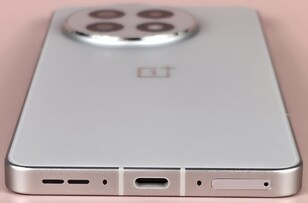
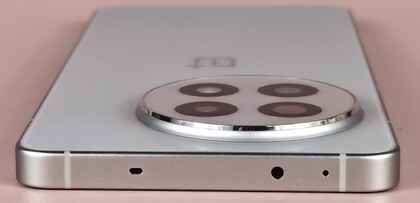
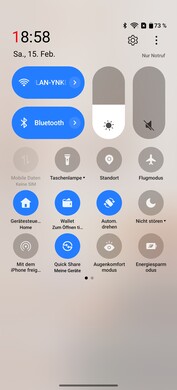
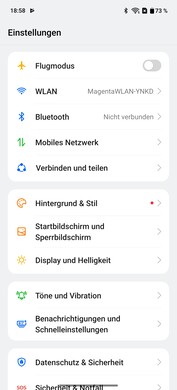
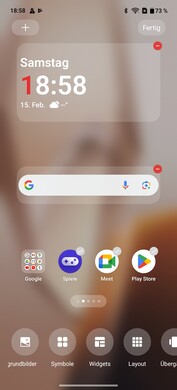
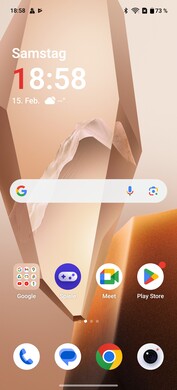
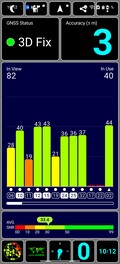
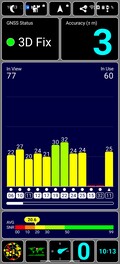















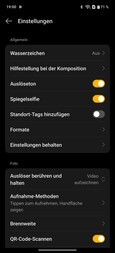
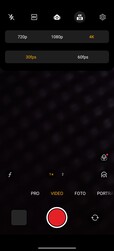


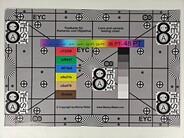







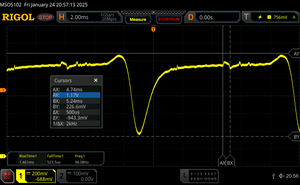





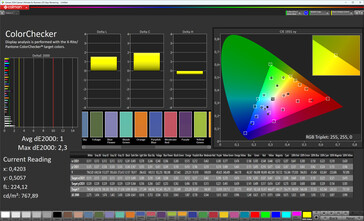
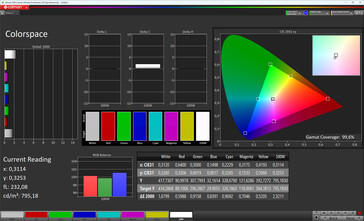

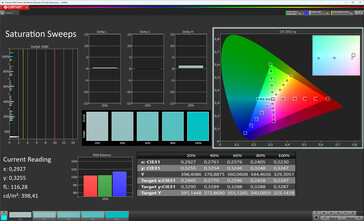
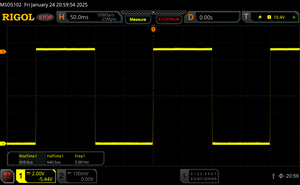

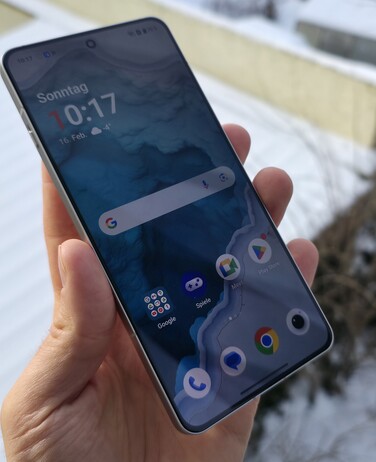
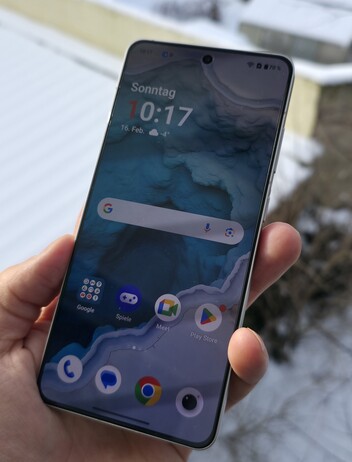



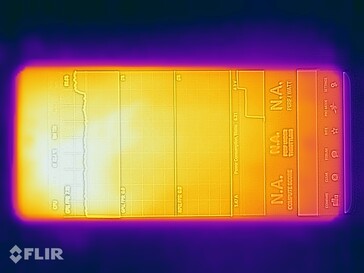
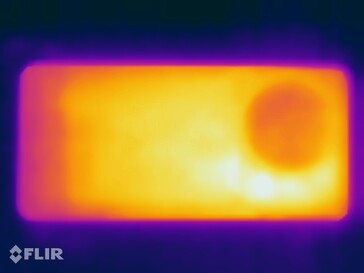
 Total Sustainability Score:
Total Sustainability Score: 


